Donald Trump Revives the Wind Energy 'Bird Death Conspiracy'


The Donald Trump campaign took yet another mysterious turn last week, when he used a rally in Pennsylvania to issue a full-throated appeal to bird lovers. Somewhat surprisingly, the Audubon Society has yet to issue a statement in support, and other avian stakeholders are similarly circumspect about Trump's newly-minted concern for wildlife.
Satirical newspaper The Onion's June profile of the Republican presidential candidate tending to his flock of domesticated pigeons on the roof of Trump Tower is more apropos than ever.
Bird deaths and rigged elections
Of course, The Onion piece was satire. But it's worth picking apart Trump's bird statement because it really isn't just about the birds. Here is the quote, as cited by Think Progress:
“The wind kills all your birds. All your birds, killed. You know, the environmentalists never talk about that,” Trump said.
In case you're wondering what that's all about, Trump is referring to concerns that birds are being killed in substantial numbers when they run into wind turbines.
At first glance, the bird death argument against wind energy may seem way off topic for the Trump campaign. It's a fair guess that bird conservation is far from a major issue of concern -- or any concern at all -- for the typical Trump voter.
On closer inspection, though, it's clear that Trump is not encouraging his voters to care about birds. He is encouraging them to believe that environmentalists are networked into a conspiracy with the wind industry to cover up bird deaths from wind turbines.
That message will certainly surprise the Audubon Society and other wildlife groups. Although turbine-linked bird deaths are a rarity compared to the carnage perpetrated by domestic cats, cars and buildings, some conservation organizations have loudly and consistently raised alarm bells over turbine risks.
Be that as it may, the conspiracy angle is perfectly consistent with the Trump campaign message of election rigging. He began to articulate that theory in force last week:
"Donald Trump empathized with Bernie Sanders supporters on Monday, saying the Vermont senator lost the Democratic primary because the election was rigged, and said he feared the general election would be rigged as well," Bianca Padro Ocasio wrote in Politico.'First of all, it’s rigged and I’m afraid the election is going to be rigged, to be honest. I have to be honest because I think my side was rigged,' Trump said at a campaign event in Columbus, Ohio."
The conspiracy angle is also consistent with the Trump strategy of drawing off Bernie Sanders voters. Though certainly not the only politician to use the word "rigged," Sanders frequently invoked the term throughout his primary campaign -- and his supporters continued to hammer on that theme long after the final primary vote was cast. (For the record, there is no record of Democratic nominee Hillary Clinton deploying the term during primary season.)
Pennsylvania and wind energy
Trump's use of Pennsylvania as a platform for criticizing wind energy is also odd at first glance, and not so odd on closer inspection.
It seems strange at first because Pennsylvania is not a wind energy hotspot on the order of Western U.S. states like California, or Midwestern states like Iowa and Kansas. It's also not the focus of new wind transmission line activity.
Pennsylvania also does not possess much in the way of federally-managed land or waters, so it is not the focus of aggressive federal wind leasing programs such as those being conducted along the Atlantic coast for offshore wind turbines.
In other words, it's not clear that Trump voters in Pennsylvania would be particularly concerned about wind energy.
However, those of you familiar with Pennsylvania's long history of coal mining know that the tension between fossil fuel and renewable energy hits very close to home in the state. Trump certainly seemed to recognize this. Here's what Trump had to say about coal during his Pennsylvania appearance, as cited by The Hill:
“I have friends that own the mines. I mean, they can’t live,” he said.“The restrictions environmentally are so unbelievable where inspectors come two and three times a day, and they can’t afford it any longer and they’re closing all the mines. … It’s not going to happen anymore, folks. We’re going to use our heads.”
It's not clear which coal mines Trump was talking about. Industry analysts cite statistical evidence that the surge in mine closures in recent years is primarily due to competition from low-cost natural gas for power plants, not amped-up environmental inspections of the mines themselves.
So, is Donald Trump crazy?
In response to Trump's series of missteps on the campaign trail last week, a fair number of political observers have begun to wonder aloud about the candidate's mental stability, or lack thereof.
However, the next time you read about someone questioning whether or not Trump is crazy, remember the calculation and focus of purpose behind his seemingly nonsensical "bird death" argument against wind power.
Photo: Gage Skidmore via flickr.com, creative commons license.
Envision Solar Hires Veterans for Made-In-America Clean Energy Products

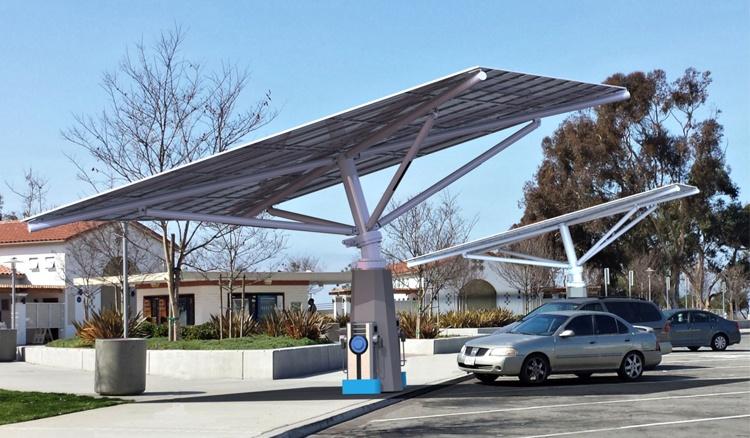
Along with the rest of the U.S. population, the veterans’ unemployment rate is on the decline. Nevertheless, finding a decent-paying job is difficult for many vets upon their return home. Almost half a million U.S. veterans are without work, and almost 60 percent of them are over the age of 45. Meanwhile, despite a bevy of employment programs and workplace protections written into U.S. federal law, Americans with a disability still struggle with employment, which dipped slightly but still sits at a stubborn 10.7 percent. San Diego-based Envision Solar, however, says it is proactive in hiring talent from both groups of workers.
The manufacturer of clean energy products, including solar-powered electric vehicle chargers and portable “solar tree” arrays, works with veterans advocacy groups including the Honor Foundation. According to one Honor Foundation video, the mission-driven experiences veterans have gained while deployed abroad make them prime candidates to transition into companies such as Envision. When asked about veterans at Envision and their age, a company spokesperson said one of its 21 full time staff members is a veteran over 45.
Andrew Mosier, a former Marine Sargent Major who served in the Middle East and is now Envision Solar’s director of sales, made the case for hiring veterans. “You’re going to get a guy to work for you who doesn’t know how to fail,” he said. “He’s going to find a way to succeed at any challenge you throw at him, and he’s going to find himself successful in your business.”
Envision Solar’s quest to hire veterans is part of a nationwide effort to assist veterans in developing a career within the solar power sector. The U.S. Department of Energy works with other government agencies on retraining programs for industries such as solar, including the SunShot Initiative. Such efforts join those including advocacy by the Solar Foundation and the Solar Energy Industries Association (SEIA). In an article written last year, the SEIA claimed American solar companies are hiring veterans at a rate twice that of other business. All of these programs are key drivers to meet the current presidential administration’s goal of having 50,000 new installers – including veterans – trained and hired by 2020.
The hiring of workers with a disability in this sector, however, has proven to be more challenging. Part of the problem is that while some companies, including Envision Solar, manufacture their products in the U.S., the industry has become dominated by Chinese manufacturers. The U.S. Department of Labor distributed primers on potential green jobs opportunities within the solar power sector, but a Cornell University study argues far more could be done to make this a more inclusive industry.
Envision Solar is hardly alone when it comes to the progress made on hiring veterans. SolarCity, which was recently acquired by Tesla Motors, has its own veterans hiring initiative. And New York state, under Gov. Andrew Cuomo’s administration, announced a program earlier this year that aims to train former military personnel so they have the tools needed to enter this industry.
Image credit: Envision Solar
Maine Fisheries’ Latest Sustainable Catch: Kelp!
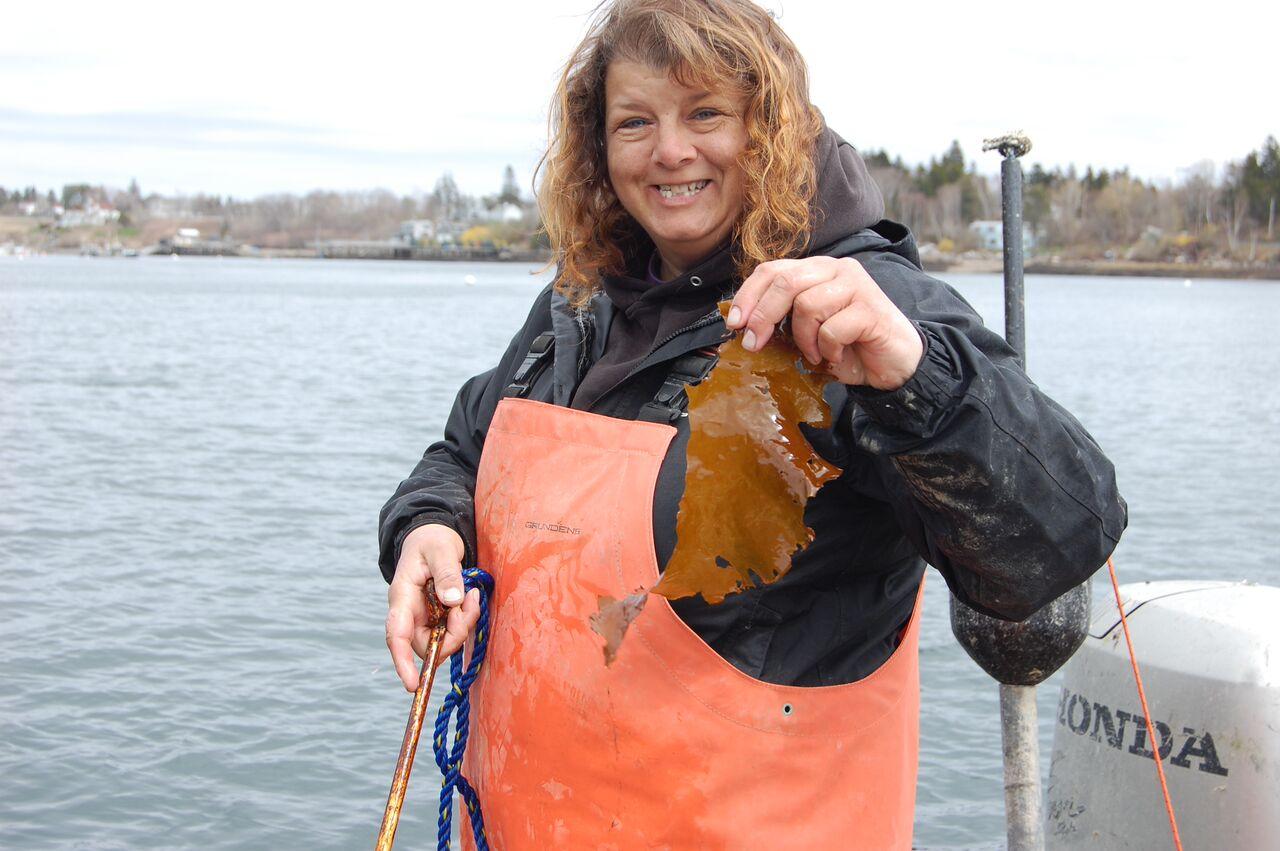

By Hugh Cowperthwaite
Give a man a fish and he’ll eat for a day, goes the proverb. Teach a man to fish, and you feed him for a lifetime. So, what if you teach a lobsterman to raise kelp?
Farming, forestry, mining and fun (recreation) make up the top vocations for residents of rural America, according to the USDA. In coastal, rural places like Maine, you can add fishing to that list. Independent and entrepreneurial, commercial fishing is not as industrial as its land-based peers in 'Big Ag.' That makes for a unique workforce demographic.
In 2015 the total value of Maine’s commercial fishing catch rose 4.4 percent from the year before, while the total live weight of 276.5 million pounds was down 10.6 percent, according to the Maine Department of Marine Resources. The lobster haul last year accounted for 80.4 percent of the catch’s value. Sure, everyone knows Maine is the largest lobster-producing state in the nation, but that sort of lopsided ratio carries risk.
“Maine’s lobster fishery continues to be a major engine for our coastal economy,” the state’s Department of Marine Resources commissioner, Patrick Keliher, told the Portland Press Herald in a statement. “Last year saw a continuation of steady and historic lobster landings throughout the season. The increase in value reflects growing demand for Maine lobster.”
Keliher noted the risk associated with so much of the industry’s revenue coming from a single species.
“It shows that we all must be working hard to build and sustain our commercial fisheries and to create more diverse opportunity, be it with traditional commercial fisheries or (by) expanding the role of aquaculture,” he said. “This work is critical to ensure we can adapt to changes in landings and value in future years.”
This is not news to anyone who’s engaged on the working waterfront.
Historically, fishermen have fished a variety of species seasonally so they were not dependent on just one species for their livelihood. Now with Maine’s wintertime shrimp fishery closed, the scallop, urchin and clam fisheries limited, and ground fishing consolidated into the hands of the largest operations due to a much-reduced resource and higher operating costs, the only income many the region’s fishermen have today is from lobstering, an industry notorious for price fluctuations and unpredictable costs.
Mission investors and lenders like Coastal Enterprises, Inc. (CEI) are devising creative ways to keep fishing sustainable, from forming cooperatives to funding innovations and enterprises.
Consider the experience of Lisa Moore. She’s like many of Maine’s lobstermen and women who have sought supplemental income to make ends meet. A sternman during the lobstering season, for the last four years Moore has been harvesting and selling wild kelp.
“Up until now, we could only bring kelp to Ocean Approved every other day because they couldn’t process everything,” Moore said. “Now, we’ll able to bring them everything we harvest.”
Kelp is a $5 billion-a-year industry internationally, and virtually all of it is harvested and dried in Asia. Moore, however, is selling her wild harvest kelp to Ocean Approved, a Maine-based kelp farm and processor. Ocean Approved recently closed on a $500,000 capital raise in partnership with CEI, Maine Venture Fund, the Island Institute and two angel investors. The impact investment will be used to upgrade and vastly increase Ocean Approved’s processing capacity, which has not been able to keep up with supply or demand. Ultimately, Ocean Approved plans to produce 100 percent of its product from farmed kelp, and Lisa wants to be one of the company's farmers.
With increased processing capacity, years of research and development studying the optimal way to farm kelp in Maine, and an open-source approach to kelp farming, the expanded processing capacity will spur sales and allow Ocean Approved to enter into buying contracts with kelp farmers around the state.
“We have built our business model on an all-boats-rise philosophy,” said Paul Dobbins, one of the owners of Ocean Approved. “We want to expand our business but we also want to encourage others to begin farming kelp. More volume will help support the infrastructure to grow the industry.”
In addition to providing a viable economic alternative to lobster fishermen, kelp has significant positive environmental impacts, including reduction of ocean acidification and inshore eutrophication, which is occurring at accelerating levels in the Gulf of Maine. Kelp farming provides Maine’s lobstermen with a diverse revenue stream, so they are not relying exclusively on lobstering.
“Kelp farming occurs in the off-season for most lobstermen, from about November to April,” notes Dick Clime, a project developer for CEI’s Fisheries Program who, in partnership with Maine Sea Grant Extension, the Maine Aquaculture Association, and the Maine Aquaculture Innovation Center has created a curriculum for lobstermen interested in aquaculture.
“Fishermen know the water, they have boats, and they are business-minded,” Clime said. “Those qualities make them the perfect fit to start kelp farming.”
Image courtesy of the author
Hugh Cowperthwaite is the Director of the Fisheries Project at Coastal Enterprises, Inc. (CEI). CEI a mission-driven lender and investor specializing in rural economic development in Maine and throughout the U.S. CEI combines financing, advising services and policy leadership to help create economically and environmentally healthy communities in which all people, especially those with low incomes, can reach their full potential.
The Full Picture: Investor Relations Meets Sustainability


Editor's Note: This article originally appeared in the Summer 2016 issue of SustainAbility's online magazine, Radar. You can download the issue here.
By Rebecca O’Neill
Companies have worked to meet investors’ needs for as long as there have been shareholders. The relationship is complex and increasingly so due to the growing interest in sustainability.
Socially responsible investors (SRIs) are not a new phenomenon – negative screens of tobacco and weapons have been around for decades. But investors are becoming increasingly savvy at integrating environmental, social and governance (ESG) factors into investment decision-making.
The level of investor interest has grown to a threshold that is making many companies start to pay serious attention to requests for ESG information. This chart from Bloomberg demonstrates the growth of demand for this kind of data since 2009.
Investors have also increased their sophistication in analyzing the issues. Investors recognize that a company’s strategy and performance on their material ESG issues makes a financial difference.
Yet on the whole, companies are not currently meeting investor expectations on ESG, as this PwC report highlights. This increased demand for ESG data presents a communication challenge for companies. What exact information do investors want? Does the company have that information available – if not, how can they get it? How can they ensure that investors know what the company is doing on ESG?
Investor relations meets sustainability
Investor relations (IR) departments are the traditional point of call for investors seeking information. IR professionals are well versed in their corporate strategy and finances. However, for more issue-specific information, they often turn to other departments to answer questions.
Sustainability teams are being increasingly called upon to help with ESG information. In a SRI-Connect and Extel 2015 survey [subscription required] it was found that in 28 percent of companies, sustainability departments were responsible for communicating to SRIs. Some investors even go straight to the sustainability contact and bypass IR completely due to an existing relationship or perhaps because they perceive it to be the more efficient way to access the data. In 23 percent of companies there is now a shared responsibility for SRI communications.
There are a number of channels between investors and companies, from questionnaires to dedicated calls and analyst days. Ultimately the two teams rely on each other in order to communicate to those investors that use the ESG information. Sustainability professionals have the deep knowledge of how the company is addressing its material sustainability issues. IR professionals have the financial expertise and the finger on the pulse of their company’s investors’ expectations. The responsibilities are blurred as investors are a key stakeholder and user of company information.
Engaging stakeholders' network research
SustainAbility's latest research is aiming to better understand the current state of engagement between IR and sustainability teams and what can be done to improve that dynamic so that companies can better communicate to investors on their material ESG issues.
We have carried out desk research and spoken to many different stakeholders in sustainability and IR teams, as well as investors and other experts. The degree of collaboration between the two teams varies hugely across different companies based on a large number of factors such as geography, sector and company culture.
What we have heard is that there is still a gap between the two teams and, as a result, a lack of integration of ESG issues into investor communications.
Understanding the reasons for the gap is helping us to identify some solutions and best practices that companies can apply to enable more integrated and proactive communications. The project is part of our Engaging Stakeholders Network program and we plan to launch the research findings at our Fall workshops in the US and Europe.
Image credit: Anna Dziubinska via Unsplash
Rebecca O’Neill is Senior Manager and Head of the Engaging Stakeholders Network, SustainAbility. Learn more about the Engaging Stakeholders Network workshops on our website.
Data Communications and The Revolution in the U.S. Electric Grid


By Stewart Kantor
The U.S. electric grid is one of the largest and most complicated machines ever created. Throughout most of its 140-year history, the grid’s electrons have flowed in one direction -- from centralized and often distant power plants to the end utility customer. However, with the widespread adoption of renewables like solar and wind and with advances in battery storage technology, there is a revolution underfoot in which each utility customer has the potential to become its own mini-power plant and a supplier of electricity.
Utilities refer to these new sources of electricity as distributed energy resources or DER. The modern utility is now challenged to balance the need to deliver consistent and reliable electricity -- historically generated from fossil fuel-based coal- and natural gas-fired powers plants -- while maximizing the use of less consistent and more intermittent forms of cleaner, decentralized generation. A good place to start in addressing this challenge is with the implementation of an advanced field-data communications network capable of monitoring and controlling every portion of the grid from the distribution substation all the way to the 'smart' solar inverter at a customer’s home. These new networks are distinct from the smart-meter networks that were implemented over the past few years, which were designed primarily for collecting non-mission critical billing data.
The distributed energy revolution has already begun with electrons flowing back into the grid from one utility customer to another. 'Smart utilities' are exploring the requirements to fully integrate these intermittent and less predictable forms of generation as seamlessly as possible. A new, modern, efficient grid that relies heavily on renewables poses a tremendous technical, economic and political challenge to the utility. Yet, it is this challenge that the utility company along with its regulators, investors and customers need to face head on. To do otherwise is to put the company, the grid and all of us at risk. Not unlike how Uber has served to undermine the economics of the taxicab industry within a relatively brief period of time, the adoption of renewables and storage poses a similar threat to the utility industry.
In order to begin the process of managing the new grid, each utility company requires an advanced field data communications network capable of managing, in real-time, millions of active intelligent devices. The list of devices is already long and getting longer every day. It includes devices such as voltage sensors and regulators, transformers and new grid functions for renewables like smart inverters collocated at solar arrays.
The utility cannot simply rely on commercial wired or wireless LTE networks for connectivity to these devices for a number of reasons. The utility company’s data needs are substantially different from most consumer and commercial data networks. Security is of utmost importance in order to minimize the potential of cyber-vandalism (e.g. denial of service attacks) or even worse, cyber-terrorism. Utilities also require ubiquitous coverage throughout their service territory, given they are focused on covering grid assets in addition to population centers.
Commercial wireless carriers are almost exclusively focused on population centers and have de-prioritized new or expanded coverage. These new utility networks require pulling a vast amount of data simultaneously from thousands of remote intelligent endpoints distributed along the grid. Commercial network providers design their networks for high capacity downstream traffic with severe restrictions on upstream capacity. Network latency, or the time it takes data packets to move from one location to another, needs to be minimal and consistent for critical utility applications, in some cases requiring latency less than 10 milliseconds. Commercial networks can have high latencies along with tremendous variability in latency.
Network availability is another critical element where utilities need to design for very high reliability, when other communications networks are down. Commercial providers continue to have major periods of disruption during man-made and natural disasters like Hurricane Sandy where a large percentage of cell towers were unavailable for an extended period of time. All of these requirements combined create a need for a new kind of network – a private cellular data network – for grid optimization.
Private cellular data networks are owned and operated by the utility company and use software define radio technology to maintain the flexibility needed to meet utility requirements. These networks operate in exclusive use, licensed radio frequencies and are capable of using high transmit power to guarantee ubiquitous coverage. The networks have flexible configuration options including the capability to establish high capacity upstream bandwidth. Network quality issues, like latency, are completely under the utility’s control. Furthermore, these networks are economical to deploy given that they are capable of leveraging the utility’s existing wireless communications infrastructure used for their mission critical voice systems.
Utilities are at a crossroads; they need to adapt to the fundamental changes occurring in the electric grid. Renewables like solar and wind have introduced variability and volatility to the grid and their rate of adoption is forecasted only to increase.
In fact, according to the Energy Information Administration (EIA), solar energy capacity is expected to grow at a 10 percent compounded average growth rate from now until 2040 increasing from 25 gigawatts of capacity to over 250 gigawatts. It is incumbent upon utilities to embrace this fundamental change in grid efficiency. It will, however, require investing in advanced field data communications based on new private cellular data network technology. This is what Caltech’s Resnick Institute refers to as a “no risk” investment required to manage what in the coming decades is sure to become the most complex cyber-physical system ever created.
Image credit: Warren Gretz, NREL & DOE
Stewart Kantor is the CEO and a co-founder of Full Spectrum Inc., a wireless telecommunications company that designs, develops and manufactures FullMAX, its private broadband wireless internet technology for mission critical industries. He has more than 20 years of experience in the wireless industry including senior level positions in marketing, finance and product development at AT&T Wireless, BellSouth International and Nokia Siemens Networks. Since 2004, Mr. Kantor has focused exclusively on the development of private wireless data network technology for mission critical industries including electric utilities, oil & gas companies and the transportation industries. www.
Rock the Green: Milwaukee Metropolitan Sewerage District
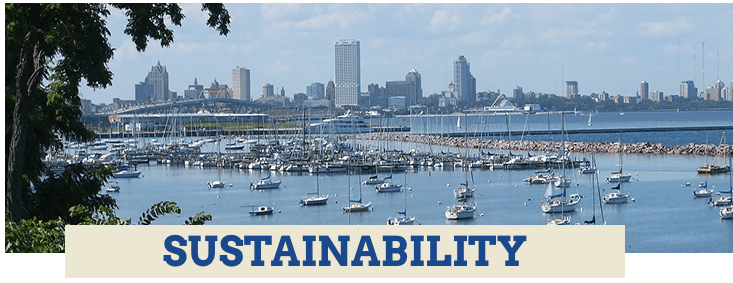

This article is part of a series of interviews with companies supporting the Rock the Green sustainability festival. Follow along here.
Welcome to the third of our interviews with companies and organizations that are supporting the upcoming Rock the Green sustainability festival in Milwaukee on Sept. 17. We’re asking companies to talk about their own sustainability stories, as well as to explain why they’re supporting the event — one of the most sustainable festivals around.
The treatment of wastewater is an often unsung task but one which has a huge relevance to sustainability. The Milwaukee Metropolitan Sewerage District has for decades been a leader in water reclamation and flood management services for about 1.1 million people in 28 communities in the Greater Milwaukee Area. The district also incorporates some unique practices including methane gas recovery and the production of organic fertilizer from sewerage. We had a chance to talk to Jeff Spence, MMSD's Agency Services Director to learn more.
3p: What's your company's definition of sustainability, and why is it important to you?
MMSD: Sustainability is not an endpoint but a pathway forward. It’s about ensuring we do our part in ways that protect the region’s environmental health, supported by socially responsible policies, and carried out thru fiscally responsible activities. By doing this, future generations in Southeastern Wisconsin have the same opportunities that current generations have.
3p: What are the most important sustainability issues your company deals with?
MMSD: Maintaining and operating our infrastructure to achieve our mission. MMSD utilizes both Grey (sewer pipes and water reclamation facilities) and Green (strategies to manage stormwater where it falls, i.e. green roofs, rain barrels, bioswales, rain gardens, soil amendments etc.) systems that require sustainable strategies in their creation, operations and maintenance. In the case of our treatment facilities energy use is a major driver, so strategies that reduce our energy consumption and the utilization of renewable energy are high on our priority list. We have an aggressive goal to create enough green infrastructure to capture 740 million gallons of water every time it rains, and we’re at the early stages of work that needs the involvement of all if we are to be successful.
3p: Sustainable thinking is no longer just a "nice to have", it's increasingly seen as a competitive advantage. Tell us how sustainable thinking is helping move your company forward?
MMSD: Sustainability is about meeting the needs of the present without compromising the ability of future generations to meet their own needs(Report of the World Commission on Environment and Development, 1987). The economy, society and environment (or profits, people and planet) are equally important in a sustainability framework. MMSD embraces sustainability as an overall core value and operational philosophy through its Commission policies. The establishment of our 2035 vision drives our work with goals such as a net 100% of our energy needs be obtained thru renewable energy sources and the reduction of our carbon footprint by 90% from our 2005 baseline.
3p: Rock the Green, the concert, is all about going for zero waste. How has your company reduced waste across your operations? Has it paid off for you financially?
MMSD: From longstanding strategies like the Milorganite Fertilizer program, and the production of methane gas at our South Shore facility to newer strategies such as the use of land fill gas to run our Jones Island facility, use of solar cells for lighting and updating our fleet with alternative fuel vehicles, all have netted positive results for MMSD rate payers.
3p: Surveys show that employees are happier and more productive when they're engaged with a company's sustainability strategies. How do you engage your staff to implement your sustainability plans?
MMSD: We have a variety of activities from recycling and composting stations, to engaging employees in group sustainability games that create greater awareness and encourage sustainable strategies at work and home. We provide information sharing thru Brown Bag forums that seek to keep employees aware of activities that move us closer to our sustainability goals.
3p: In a nutshell, how will you be "rocking the green" in the coming 5 years?
MMSD: We will have moved the needle closer to achieving our 2035 vision of energy efficiency and sustainable operations.
CDL embarks on its next phase of sustainability innovation


Valuing the Workforce to Improve Performance
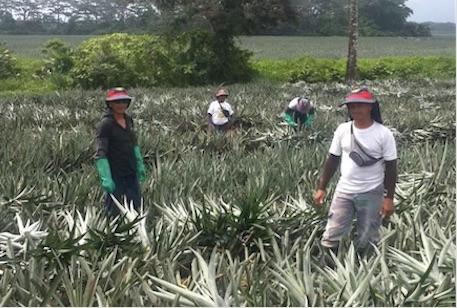

Startling Map Shows True Extent of America's Landfill Problem
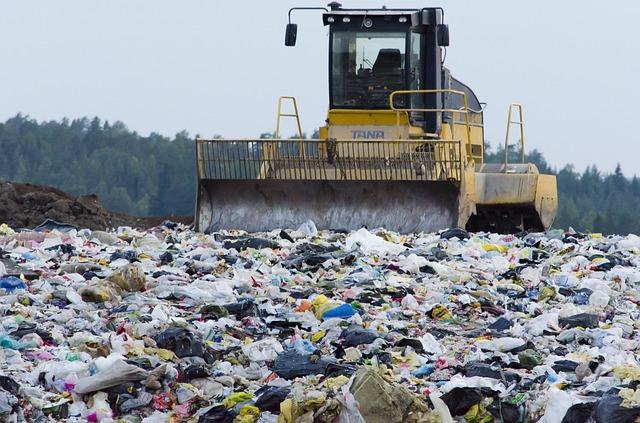

America, land of the ... landfills? That's what we've turned into since 1937, when the first sanitary landfill opened in Fresno, California. Today, there are nearly 2,000 active landfills across the country and hundreds more are at capacity, a stark reminder of just how massive our waste problem has become.
This visualization from SaveOnEnergy shows how quickly landfills have boomed across the country, particularly in the past 30 years.
Source: SaveOnEnergy.com
One thing we have to remember when looking at this is that trash, and landfills, are a human invention. Waste does not exist in nature, in any form. Everything that is produced in a healthy ecosystem is consumed or decomposed by another organism, or the sun. That is because, in a natural system, everything has value to something.
For most of human history, we also lived in this system, with our waste being part of this natural cycle. It was only with the advent of industrialization -- when we began to produce goods that did not easily biodegrade -- that waste, in its modern form, emerged. Instead of figuring out how to reuse these byproducts, we went with the cheaper option: landfills.
Even then, for much of the era after the industrial revolution, waste was relatively manageable. What changed this were two things – the invention of plastic, a material that does not biodegrade and is incredibly cheap to produce (when its environmental impacts are, of course, not factored in). Soon, cheap plastic made its way into homes as the era of “throw-it-away” began after World War II. Disposable cups, throw-away plastic TV dinner trays, and masses of styrofoam fast-food containers that quickly spread not only across America, but also the globe. Today, it is packaging from e-commerce that is clogging up our waste stream.
And with it comes a boom in landfills. And that's if we're lucky and the waste management system works. As the growing plastic gyres in the oceans prove, too often our waste ends up in nature.
It is obvious that the status quo cannot continue. Creating waste on a planet with finite resources is not only foolish, but it's also unsustainable.
We need to return to how things were in nature, where waste does not exist, by creating a circular economy and committing to zero-waste systems. According to the Ellen T. MacArthur Foundation, one of the organizations pushing most strongly for companies and governments to adopt circular economy principles: “A circular economy is one that is restorative and regenerative by design, and which aims to keep products, components and materials at their highest utility and value at all times, distinguishing between technical and biological cycles.”
Thus, in a circular economy, nearly every consumer good would be recyclable, repairable or compostable, eliminating the need for so many landfills. The good news? We're getting there. Recycling rates are on the rise, hitting 34 percent, and more and more cities are adopting citywide composting and waste reduction programs. The bad news? We need that number to get up to 100 percent. Otherwise, more and more waste will end up in more and more landfills across the country. And more landfills are the last thing we need.
Image credit: Prylarer via Pixabay
Twitter Struggles as Trolling Continues to Turn Users Away


Twitter established a policy on reporting abuse several years ago. But the trolling keeps getting uglier, and more prominent users are closing their accounts. Trolling is also distracting everyday users, and not for the better.
Fans of the Olympics who are using the social media channel to keep track of the games found themselves surprised over the weekend. They had to weed through abuses hurled at athletes over their appearances and accomplishments, as highlighted by Jessica Van Sack of the Boston Herald. And some of the trolling inspired by the Rio Games appears to be state-sponsored. Australian Mack Horton, after winning the gold in the 400-meter freestyle swimming final, received heaps of abuse from fake Chinese profiles. Twitter is blocked in China, but fans there were upset over comments Horton made about the relay’s silver medalist, Sun Yang. The Chinese swimmer had been suspended in the past for doping.
And yesterday Normani Kordei of the girl band Fifth Harmony announced she was quitting Twitter after a torrent of racist abuse. The controversy came weeks after "Saturday Night Live" and "Ghostbusters" star Leslie Jones also briefly quit the social media channel after an onslaught of racist and sexist comments, the storm was allegedly launched by Breitbart News’ Milo Yiannopoulos.
Yiannopoulos was banned from Twitter. But many anonymous users, who apparently do not understand what the First Amendment actually means, are not getting the message. Meanwhile more social media influencers are ditching the 10-year-old service, which has become so intertwined within our culture that a comment about a tweet became one of the best punchlines in Hillary Clinton’s speech accepting her party’s nomination.
One example is the feminist writer Jessica Valenti, who said late last month she was quitting Twitter after rape and death threats against her 5-year-old daughter. The list of on-and-off again and ex-Twitter users is long. Zelda Williams, the daughter of the late comedian Robin Williams, announced she was taking a break from the service. While Williams said the time off was due to the two-year anniversary of her father’s passing, the abuse she received after his death in August 2014 also led to an outcry over Twitter’s perceived lack of action. British food writer Jack Monroe deleted her Twitter account last year after a wave of homophobic taunts flooded her feed.
Indeed, one could argue many of these trolls are part of the 'disenfranchised white boy' demographic who have long felt “the system” has screwed them, with racial minorities and women being the easy targets for their invective. True, there is the argument that since the vast majority of these trolls hide behind anonymous handles, they would never say the things they post or tweet in a bar or any public place. For that matter, we could just consider the source and develop thicker skins. The problem with that argument is that this abuse seldom has to do with debates over content, and instead cuts into gender, sexuality and race. In fact, this behavior is akin to the stalking or harassment that is already covered by laws across the country, including in California.
And social media, with Twitter at the forefront, has a well-documented history of being used to broadcast other forms of hate and even terror, whether it is the supporters of jihadist groups such as Daesh (ISIS or ISIL in the Western press) or the fear-mongers who have reported pro-LGBT Muslim women to local authorities in that region.
The result is a bizarre outcome that would be a public relations nightmare for any company. Twitter has united two disparate movements, one being the forces often supporting demagogues like Donald Trump and David Duke and the other radical political groups in the Middle East who want to destroy anyone and anything in their way. Users in both groups hide behind anonymity and cowardice, but are skilled at shutting down open and free discussion. The result is a scarlet letter on Twitter than the company is either unable or unwilling to remove. As David Auerbach of Slate pointed out last year, Twitter keeps implementing policies that can be described as cosmetic at best and satisfy no one.
The outcome for Twitter is sluggish user growth as users either find other platforms on which to share their views or just avoid social media completely. And as Backchannel writer Jessi Hempel explains, Twitter’s business is suffering now and faces serious threats in the long term. The company’s stock is mired in a long slump, and it is the subject of acquisition rumors. When more public figures leave the service, that discourages the rest of us from signing up, which means advertisers are going to question the wisdom of advertising on the service. And without advertisers, Twitter cannot survive. The company should not be cowed into being a purported “free speech” zone when it is clear that the Constitution shields our speech from government interference and is not a document that provides cover to the worst elements of society.
Image credit: Troy Holden/Wiki Commons